West Bengal, a land of rich history, art, and literature, is equally renowned for its vibrant folk and traditional dance forms. The dances of West Bengal reflect the state’s deep-rooted traditions, social customs, and religious practices. From the energetic Chhau dance to the graceful Gaudiya Nritya, these dance forms have been passed down through generations, preserving the state’s cultural identity.
Dances in Bengal are often intertwined with festivals, harvest celebrations, and religious rituals. Here is a list of some of the most famous traditional dance forms of West Bengal:
1. Chhau Dance – The Martial Folk Dance of Purulia
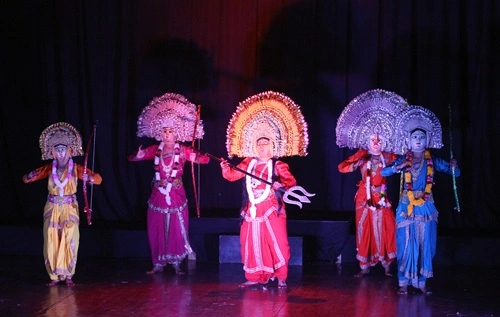
Chhau is one of the most prominent dance forms of West Bengal, originating in the Purulia district. It is a semi-classical, masked dance that blends elements of martial arts, acrobatics, and storytelling.
Significance:
Chhau dance is traditionally performed during the Gajan festival dedicated to Lord Shiva. Dancers wear elaborate masks and colorful costumes, portraying mythological characters from the Ramayana and Mahabharata. The vigorous movements and rhythmic drum beats create a mesmerizing spectacle.
2. Gaudiya Nritya – The Classical Dance of Bengal
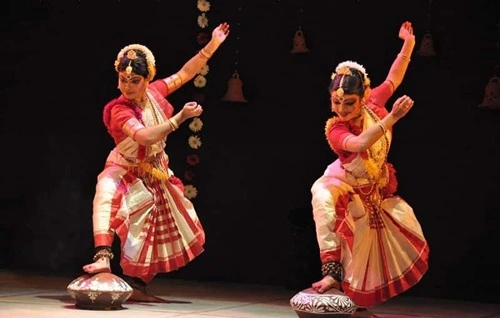
Gaudiya Nritya is a classical dance form that originated in Bengal but remained relatively unknown compared to other Indian classical dances. It incorporates elements of Natya Shastra and ancient Bengali traditions.
Significance:
This dance form focuses on storytelling through expressive movements and gestures. It is often performed during religious and cultural festivals, depicting themes from Hindu epics and Vaishnavite traditions. Efforts are being made to revive Gaudiya Nritya and gain national recognition for it.
3. Gambhira Dance – The Devotional Dance of Malda
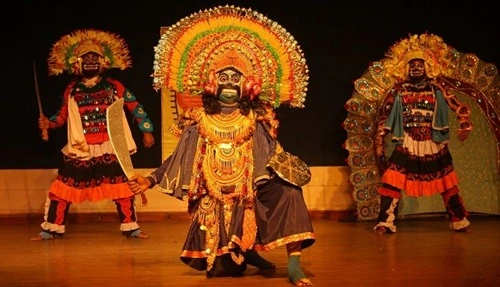
Gambhira is a unique folk dance-drama originating in the Malda district of West Bengal. It is performed in honor of Lord Shiva and serves as a medium to highlight social and political issues.
Significance:
The dance is usually performed by two male dancers who take on the roles of a grandfather and grandson, engaging in humorous yet thought-provoking conversations. The dialogues, combined with expressive dance movements, make Gambhira an engaging art form.
4. Tusu Dance – The Harvest Dance of Rural Bengal
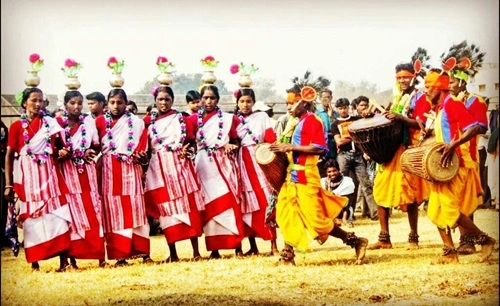
Tusu dance is a folk dance performed by women in rural Bengal during the harvest season, particularly during the Poush Mela and Makar Sankranti celebrations.
Significance:
Women form circles and sing Tusu songs, accompanied by simple yet graceful dance movements. The dance is an expression of joy, gratitude, and aspirations of rural women. It also reflects themes of love and devotion.
5. Kirtan Dance – The Devotional Dance of the Vaishnavas

Kirtan dance is an integral part of Bengal’s Bhakti tradition, particularly associated with Chaitanya Mahaprabhu and the Vaishnavite movement. It involves singing devotional songs dedicated to Lord Krishna while dancing in spiritual ecstasy.
Significance:
Performed in temples, streets, and religious gatherings, Kirtan dance is believed to elevate the soul and bring divine bliss. The dancers move energetically, clapping and swaying in rhythm with the music, often accompanied by cymbals, mridangam, and other traditional instruments.
6. Domni Dance – The Satirical Folk Dance of North Bengal
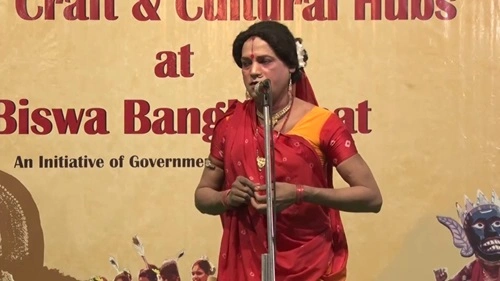
Domni dance is a folk theatre dance form originating in North Bengal, particularly in the Rajbanshi community. It combines dance, music, and satirical dialogues to address social issues.
Significance:
Domni performances use humor and wit to raise awareness about social evils, making it a powerful medium for storytelling. The dance is performed in open spaces during festivals and village gatherings.
7. Baul Dance – The Mystical Dance of Bengal’s Wandering Minstrels
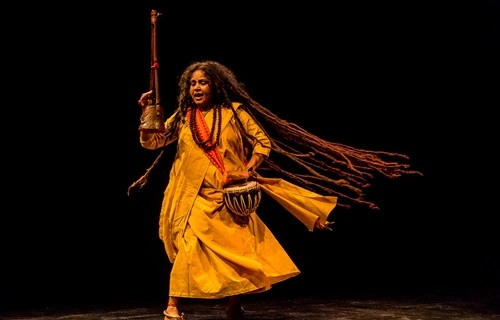
The Bauls of Bengal are mystic singers known for their soulful music and philosophy of love, spirituality, and humanism. Baul dance is an extension of their musical traditions, performed in a free-flowing and spontaneous manner.
Significance:
Baul dance is not structured like classical or folk dances but is a form of self-expression. It reflects the Baul philosophy of divine love and unity with nature. The dancers, dressed in saffron robes, perform with instruments like the ektara and dotara.
8. Raibenshe Dance – The Warrior Dance of Bengal
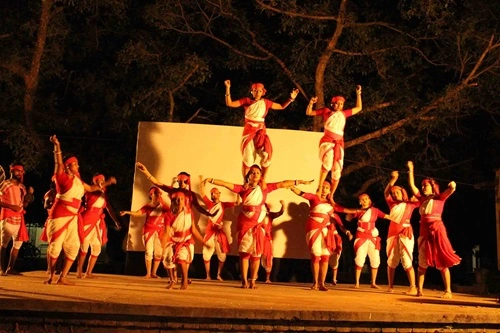
Raibenshe is a vigorous martial dance performed by men, traditionally from the Bagdi community of Bengal. It showcases the strength, agility, and martial skills of the dancers.
Significance:
Raibenshe was historically performed by warriors to exhibit their physical prowess. Today, it is performed during cultural events, featuring impressive acrobatics and synchronized movements with sticks, swords, and shields.
9. Jhumur Dance – The Folk Dance of Tea Garden Workers
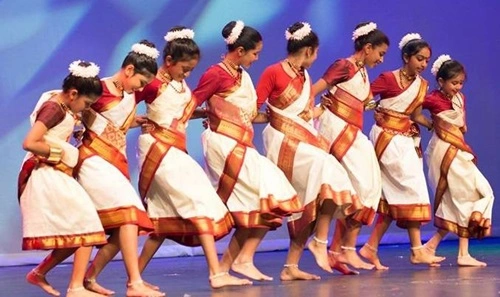
Jhumur dance is performed by the tribal communities working in the tea gardens of North Bengal, including the Santhals and Oraons. It is an expression of their daily struggles, joys, and cultural heritage.
Significance:
Performed in groups, Jhumur dance is accompanied by traditional Jhumur songs, reflecting themes of nature, love, and social issues. The dancers wear colorful sarees and ornaments, moving gracefully to the rhythmic beats.
10. Alkap Dance – The Satirical Dance-Drama of Bengal
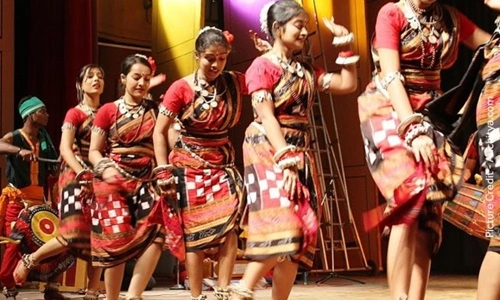
Alkap is a folk dance-drama popular in the rural districts of Bengal, particularly Murshidabad, Malda, and Birbhum. It combines music, dance, and witty dialogues to narrate social or mythological stories.
Significance:
Alkap performances are often seen during fairs and festivals, with a group of performers enacting different characters. The humor and satire in Alkap make it an entertaining yet insightful folk tradition.
Conclusion
The traditional dances of West Bengal are a reflection of its diverse cultural and social landscape. From the energetic Chhau and Raibenshe to the devotional Kirtan and Gambhira, each dance form tells a unique story, preserving the heritage of Bengal.
These dance forms are not merely artistic expressions but serve as social, religious, and political commentaries. Many of these traditions are being revived and promoted through cultural festivals and government initiatives, ensuring that Bengal’s rich dance heritage continues to thrive for generations to come.
As modernity continues to influence art forms, it is essential to celebrate and preserve these traditional dances, which remain a source of pride and identity for the people of Bengal.

